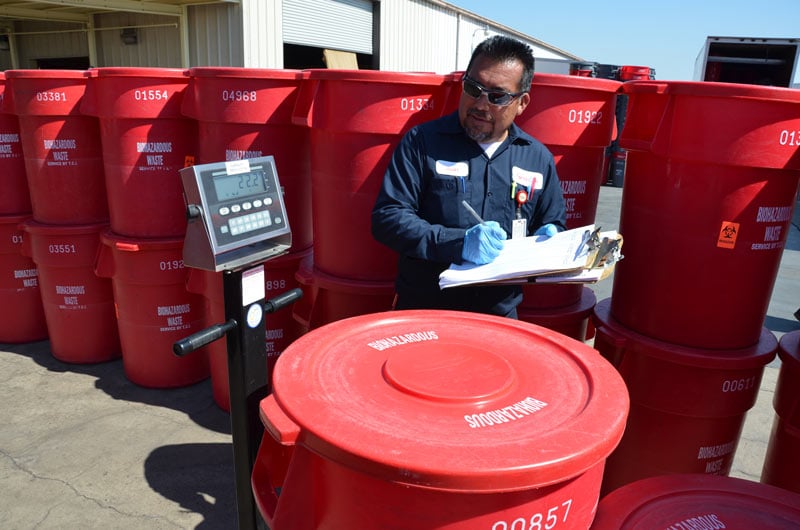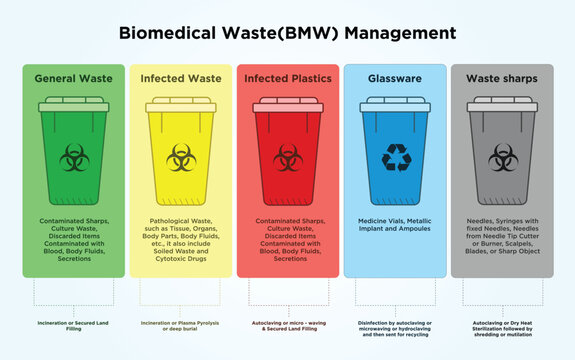Compliance and Regulations for Medical Garbage Disposal
Compliance and policies for medical garbage disposal play an important function in ensuring the safety and security and health of both medical care specialists and the basic public. Correct monitoring of medical waste is necessary to avoid the spread of infections, secure the atmosphere, and preserve public health and wellness. This requires adherence to details guidelines and protocols stated by regulatory firms and bodies. These laws encompass various aspects, consisting of the category and partition of clinical waste, appropriate storage and handling treatments, as well as transportation and disposal techniques. By adhering to these regulations, medical care facilities can lessen the danger of contamination and possible harm to individuals and the atmosphere. This write-up will certainly discover the relevance of compliance and offer an overview of the crucial policies governing clinical waste disposal.
Importance of Compliance
The importance of compliance with policies for medical waste disposal can not be overstated. Correct disposal of medical waste is essential for guaranteeing the security and well-being of healthcare employees, people, and the basic public. Clinical waste, that includes items such as made use of needles, contaminated gloves, and biomedical waste, can posture significant health and wellness dangers if not taken care of and dealt with correctly.
Compliance with laws makes certain that clinical waste is managed in a manner that minimizes the possibility for direct exposure to infectious conditions and unsafe materials - medical waste removal service. It aids avoid the spread of infections, such as HIV, liver disease B and C, and various other bloodborne microorganisms. Conformity likewise plays a crucial duty in securing the setting by protecting against contamination of water resources, dirt, and air
Failure to follow regulations can result in severe effects for health care facilities, including fines, lawsuit, and damages to their online reputation. Furthermore, non-compliance may jeopardize the health and wellness and safety of medical care workers, patients, and the neighborhood.
Conformity with guidelines for clinical garbage disposal requires adherence to details guidelines and methods. These may consist of proper partition, product packaging, labeling, and storage of clinical waste. It also includes using authorized disposal approaches, such as autoclaving, landfilling, or incineration, depending on the kind of waste.
Regulatory Agencies and Bodies
Regulative firms and bodies play a vital role in looking after compliance with guidelines for medical waste disposal. These companies are accountable for establishing requirements, standards, and procedures to ensure the appropriate and secure handling of clinical waste. They implement and check compliance to safeguard public health and wellness and the environment.
One of one of the most noticeable regulative agencies in the USA is the Epa (EPA) The EPA is in charge of managing the storage space, transport, treatment, and disposal of clinical waste. They develop guidelines for waste generators, transporters, and treatment facilities to comply with, making sure that all needed precautions are taken to prevent the spread of diseases and contamination.
An additional crucial regulative body is the Occupational Safety and Health Management (OSHA) OSHA establishes laws and standards to shield employees from work hazards, including those relevant to clinical waste. WasteX Medical Waste Disposal. They give guidelines for the secure handling and disposal of medical waste to shield workers in medical care facilities
Along with these federal companies, individual states likewise have their own governing bodies that supervise clinical waste disposal. These firms may have their very own certain policies and needs that should be followed.

Category and Partition of Medical Waste
To make certain proper monitoring of medical waste, it is vital to categorize and segregate it according to developed procedures and standards. medical waste disposal. Category and partition play an essential function in decreasing the risk of infection, securing the setting, and ensuring the security of health care employees and the public
Medical waste is categorized right into various groups based on its potential risk degree. These groups include contagious waste, pathological waste, sharps waste, pharmaceutical waste, chemical waste, and contaminated waste. Each category requires particular handling, disposal, transportation, and storage techniques to lessen the risk of exposure and contamination.
Partition of clinical waste entails dividing various sorts of waste at the source. This process makes sure that waste with various danger levels is not blended, decreasing the capacity for cross-contamination and making disposal procedures much more effective. Appropriate segregation is achieved through the use of color-coded labels and containers, which help healthcare workers and waste management personnel identify and deal with each kind of waste appropriately.
In enhancement to classification and partition, health care facilities must likewise abide by regional, state, and federal guidelines relating to medical waste monitoring. These regulations outline specific requirements for storage, transportation, treatment, and last disposal of clinical waste, guaranteeing conformity and preserving public health and safety.
Proper Storage Space and Taking Care Of Treatments
Correct storage and managing treatments play a vital duty in ensuring the risk-free and certified monitoring of clinical waste. Medical waste, that includes products such as used syringes, infected handwear covers, and ended drugs, can present major health and ecological risks otherwise dealt with correctly. Consequently, it is critical for health care facilities and various other generators of medical waste to carry out strict storage space and dealing with protocols.
To start with, medical waste should be saved in sturdy, leak-proof containers that are specifically made for this function. These containers ought to be labeled with the global biohazard symbol and words "medical waste" to clearly show the components. Furthermore, the containers ought to be maintained safely near to avoid any prospective leakage or spillage.
In addition, it is crucial to segregate various kinds of clinical waste to avoid cross-contamination. Sharps, such as scalpels and needles, ought to be saved in puncture-resistant containers to reduce the threat of injuries - WasteX Medical Waste Disposal. Chemical waste, such as disinfectants and solvents, must be stored individually from other sorts of clinical waste to avoid hazardous direct exposures or chemical responses

Transportation and Disposal Methods
Healthcare facilities should guarantee the safe transport and correct disposal of their clinical waste to adhere to guidelines and secure public health and wellness. Transportation and disposal approaches play an essential function in protecting against the spread of transmittable illness and reducing the environmental influence of clinical waste.
To carry medical waste, healthcare centers must make use of puncture-resistant and watertight containers that are identified with the biohazard sign. These containers ought to be securely sealed to stop any leakage throughout transport. Furthermore, healthcare centers ought to develop procedures for the transportation process, including using skilled workers and specialized cars.
As soon as the clinical waste gets to the disposal facility, it undergoes different techniques of treatment - WasteX Medical Waste Disposal. One typical technique is incineration, which entails shedding the waste at high temperature levels to damage microorganisms and lower the volume of waste.
It is important for health care centers to work with certified and permitted waste monitoring companies to guarantee correct transport and disposal of clinical waste. These business have the know-how and resources to deal with clinical waste securely and in conformity with policies.
Conclusion
In final thought, compliance with laws for clinical waste disposal is of utmost value to make sure public health and security. On the whole, adherence to compliance and guidelines is required to successfully take care of medical waste.
Medical waste, which consists of products such as used needles, contaminated gloves, and biomedical waste, can posture severe health risks if not handled and disposed of correctly.
These groups consist of infectious waste, pathological waste, sharps waste, pharmaceutical waste, chemical waste, and radioactive waste.Partition of medical waste entails separating different types of waste at the resource. Appropriate segregation is attained via the use of color-coded tags and containers, which assist healthcare employees and waste administration workers handle each kind and recognize of waste properly.
Chemical waste, such as solvents and disinfectants, ought to be kept separately from other types of clinical waste to protect against harmful exposures or chemical responses.